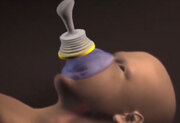-
Contact
Sales & Customer Service
0800 612 6537 support@safelincs.co.uk Live ChatDelivery Enquiries
0800 077 6149 - Resources
Fire & Safety Solutions
CALL OUR TEAM NOW 0800 612 6537
Lines open today 8am - 6pm
Free Delivery
on 100s of Products
Live Chat - Online
Instant help & Advice
Trade Discounts
and exclusive pricing
0% Credit Available
Open an account now
5 Star Customer Feedback
First Aid Kits & Accessories
When accidents happen, having the correct first aid equipment can make all the difference. At Safelincs, we stock a comprehensive range of first aid kits and accessories designed to help you respond quickly and effectively to workplace injuries and emergencies. The first aid equipment you need depends on the size of your workplace, your industry, and the specific risks associated with it. Our range includes everything from basic first aid kits for small offices to comprehensive trauma supplies for high-risk environments.
Read more about first aid kits & accessories...
Different types of first aid equipment you may need
We stock workplace first aid kits that meet HSE guidelines, as well as portable kits for vehicles and remote locations, and specialist equipment for burns, eye injuries, and cuts. We also have trauma supplies for high-risk environments.
Choosing the right first aid kit
Choosing the right first aid kit starts with understanding your legal requirements and workplace hazards. Small businesses typically require a basic HSE-compliant kit that includes plasters, bandages, and antiseptic wipes. Larger workplaces or those with specific risks may require additional supplies, such as eyewash stations, burn dressings, or bleeding control equipment. We stock home and travel first aid kits, perfect for families. Our team can help you select the most appropriate kit for your needs.
Workplace first aid equipment
Essential workplace first aid equipment includes sterile dressings, triangular bandages, safety pins, disposable gloves, antiseptic wipes, and guidance cards. Depending on your risk assessment, you might also need eye wash solutions, burn gel, instant cold packs, and resuscitation face shields. All our kits are designed to meet current HSE recommendations and include clear instructions for use.
How often should first aid equipment be checked?
First aid equipment should be checked regularly to ensure it remains in good condition and within date. We recommend conducting monthly checks of all supplies and replacing any used or expired items immediately. Many of our customers find it helpful to assign this responsibility to a trained first aider who can also identify when additional supplies might be needed.
Storing first aid equipment
First aid equipment should be stored in easily accessible locations that are marked and known to all staff members. Avoid areas with extreme temperatures or humidity that could damage supplies. Consider having multiple smaller kits in different locations rather than one large kit, especially in bigger premises. Mobile first aid kits are perfect for vehicles, construction sites and outdoor activities. We also sell first aid cabinets for easy identification of location.
What training is required to use first aid equipment?
Professional first aid training is essential for anyone responsible for workplace first aid. Training covers how to assess injuries, use equipment properly, and when to call emergency services. Even basic training can significantly improve response times and outcomes. We work with qualified training providers and can recommend courses that complement the equipment you choose.
Ready to protect your workplace with professional first aid equipment? Browse our complete range of HSE-compliant first aid kits and accessories, or contact our expert team for personalised advice on the best solutions for your specific needs.
Frequently Asked Questions (FAQs)
What's the difference between HSE-compliant and basic first aid kits?
HSE-compliant first aid kits meet the Health and Safety Executive's workplace first aid recommendations and contain specific quantities of essential supplies based on your workplace size and risk level.
These kits include sterile dressings, triangular bandages, safety pins, disposable gloves, and guidance leaflets in quantities that match regulatory guidelines. Basic kits may contain similar items, but in different quantities or specifications that might not fully meet workplace requirements.
How many first aid kits do I need for my workplace?
The number of first aid kits you need depends on the size and layout of your workplace, as well as the results of your risk assessment. Generally, you need one kit for every 25-50 employees; however, this can vary depending on your industry and premises.
Large or multi-floor buildings benefit from having kits on each level. Additionally, consider portable kits for vehicles, remote work areas, or high-risk zones. Our team can help you determine the correct number and placement for your specific situation.
Can first aid supplies expire, and how do I manage replacements?
Yes, many first aid supplies have expiration dates, including antiseptic wipes, eye wash solutions, burn gel, and some medications. Sterile dressings and bandages can also degrade over time or if their packaging is damaged.
You should check expiry dates monthly and replace items as needed. We offer refill services and can set up regular supply schedules to help you maintain a fresh, adequate supply of first aid equipment without the hassle of constant monitoring.
What additional equipment is required for high-risk workplaces?
High-risk workplaces often require specialist first aid equipment beyond standard kits. This might include emergency eyewash stations for chemical hazards, burn dressings and cooling gels for heat-related risks, haemostatic dressings for severe bleeding, or hypothermia blankets for outdoor work.
Industries like construction, manufacturing, or laboratories each have specific additional requirements. A proper risk assessment will identify what extra equipment you need, and we can supply specialist items to complement your standard first aid provision.
Do you provide first aid training to go with the equipment?
Professional first aid training is essential for effective emergency response. Our approved training providers offer specialist and general first aid training.
Many of our customers find it helpful to coordinate their equipment procurement with their training schedule, ensuring staff know how to use everything in their kits properly. We offer small group training at the customer's site for ease and convenience. We can advise on which training levels suit your workplace needs and help you understand how different courses relate to the equipment you'll be using.
For professional-grade solutions, explore our range of St John Ambulance first aid kits and consider proper storage with our first aid storage cabinets to keep supplies organised and protected.
Door Retainers
Freedor SmartSound, taking the weight out of fire doors (01:48)

Benefits of the Freedor SmartSound door and fire door retainer and closer.
Carbon Monoxide Alarms
An introduction to the range of carbon monoxide alarms (01:16)
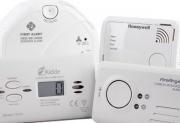
An introduction to the selection of Kidde and Ei Electronics carbon monoxide detectors we sell.
Where to install a carbon monoxide (CO) alarm (01:26)
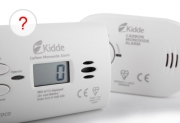
Where a carbon monoxide alarm should be installed to be most effective.
UltraFire UBCO1D Digital Carbon Monoxide Alarm Overview (00:30)
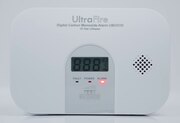
Meet the UltraFire UBCO1 carbon monoxide alarm with a digital display to show the current CO reading and BS EN 50291-1 certification.
UltraFire UBCO1 Carbon Monoxide Alarm Overview (00:31)
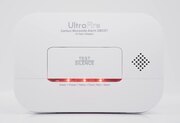
Meet the UltraFire UBCO1 carbon monoxide alarm with clear LED indicators and BS EN 50291-1 certification.
Water Mist Fire Extinguishers
Water mist extinguisher clothing fire demonstration (01:45)
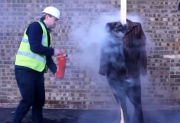
A demonstration of how effective water mist fire extinguishers are on clothing fires.
Water mist extinguisher Christmas tree demonstration (00:25)
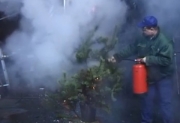
The amazing effectiveness of water mist fire extinguishers on Christmas tree fires.
Water mist extinguishers vs traditional extinguishers (03:20)
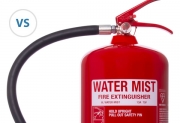
The stunning difference in performance between traditional and water mist extinguishers.
P50 Water Mist Fire Extinguisher: Safe for use on live e... (00:56)
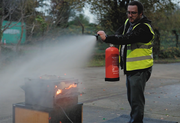
In accordance with BS EN 3-7, P50 Water Mist Service-Free Fire Extinguishers are certified and safe for use on live electrical equipment.
Fire Door Retainers
How The Dorgard Fire Door Holder Works (02:19)
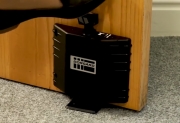
How the Dorgard fire door retainer will help you avoid the illegal wedging open of fire doors.
Freedor SmartSound, taking the weight out of fire doors (01:48)

Benefits of the Freedor SmartSound door and fire door retainer and closer.
DorMag SmartSound Magnetic Fire Door Holder (00:55)
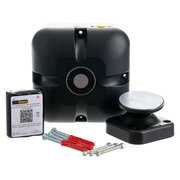
The DorMag SmartSound is a wireless fire door magnet that holds your fire doors open legally, automatically releasing the door when the fire alarm sounds. Using advanced sound recognition technology allows it to identify the fire alarm more accurately, reducing false activations caused by ambient noises.
Dorgard: A Solution to Cross Contamination (00:44)
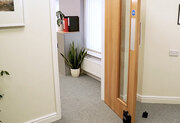
Hold fire doors open & remove the need to touch door handles, a primary touchpoint for cross-contamination.
How to Install The Dorgard Fire Door Holder (03:12)
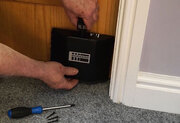
This video will show you step-by-step how to correctly install a Dorgard fire door holder.
Fireco Dorgard Pro & Freedor Pro Fire Door Retainer Syst... (02:01)
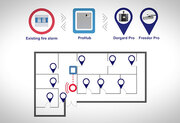
Wirelessly connect up to 500 Dorgard & Freedor fire door retainers to your alarm panel with a Fireco Pro System.
Replacing the Batteries in a Dorgard Fire Door Retainer (03:02)
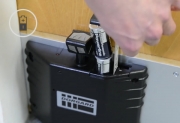
This video will show you step-by-step how to replace the batteries in a Dorgard Fire Door Retainer.
Agrippa Door Holder Installation (01:50)
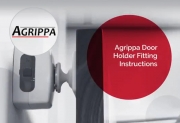
A short video demonstrating the installation of an Agrippa door holder.
Fire Door Closers
Agrippa Door Closer Installation (04:47)
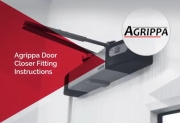
A short video demoonstrating how to install the Agrippa door closer.
Agrippa Door Holders and Closers (02:24)
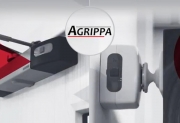
An introduction to the Agrippa door closer and Agrippa door holder.
Installing the Freedor free-swing door closer on the pul... (09:42)
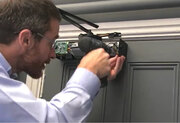
A detailed video showing the installation of a Freedor free-swing door closer on the pull side of a fire door.
Freedor SmartSound, taking the weight out of fire doors (01:48)

Benefits of the Freedor SmartSound door and fire door retainer and closer.
Installing the Freedor free-swing door closer on the pus... (08:40)
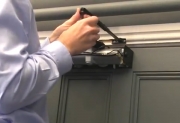
A detailed video showing the installation of a Freedor free-swing door closer on the push side of a fire door.
Briton 2320B.T Overhead Door Closer (04:11)
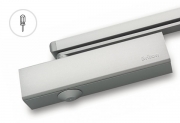
Installation of the Briton 2320B.T Cam Action Overhead Door Closer
Passive Fire Protection
3-2-1 Spray Christmas Tree Fire Demonstration (02:26)
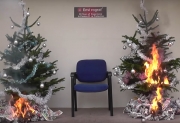
A short video comparing a two Christmas tree fires; one coated with 3-2-1 spray and one without.
First Aid & Defibrillators (AEDs)
Safelincs' Range of First Aid Equipment (01:30)
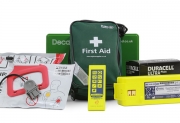
An introduction to the range of first aid kits, supplies and equipment offered by Safelincs.
Defibrillators in the Workplace Q&A (02:06)
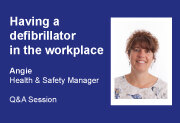
Does my organisation need a defibrillator? Your questions answered by Health and Safety Manager, Angie.
Cardiac Science Powerheart G5 AED (04:48)
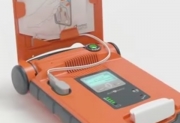
A brief demonstration of the Powerheart G5 Automatic External Defibrillator.
How to use your first aid kit & contents (02:04)
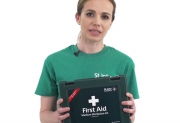
A St John Ambulance trainer explains the essentials of a first aid kit.
Our Official YouTube Channel
Subscribe to our official YouTube channel to watch step-by-step help guides, get expert advice and top tips about fire safety and to keep up to date with all our latest videos.
We upload new videos and content each month.
Visit Our YouTube Channel



















